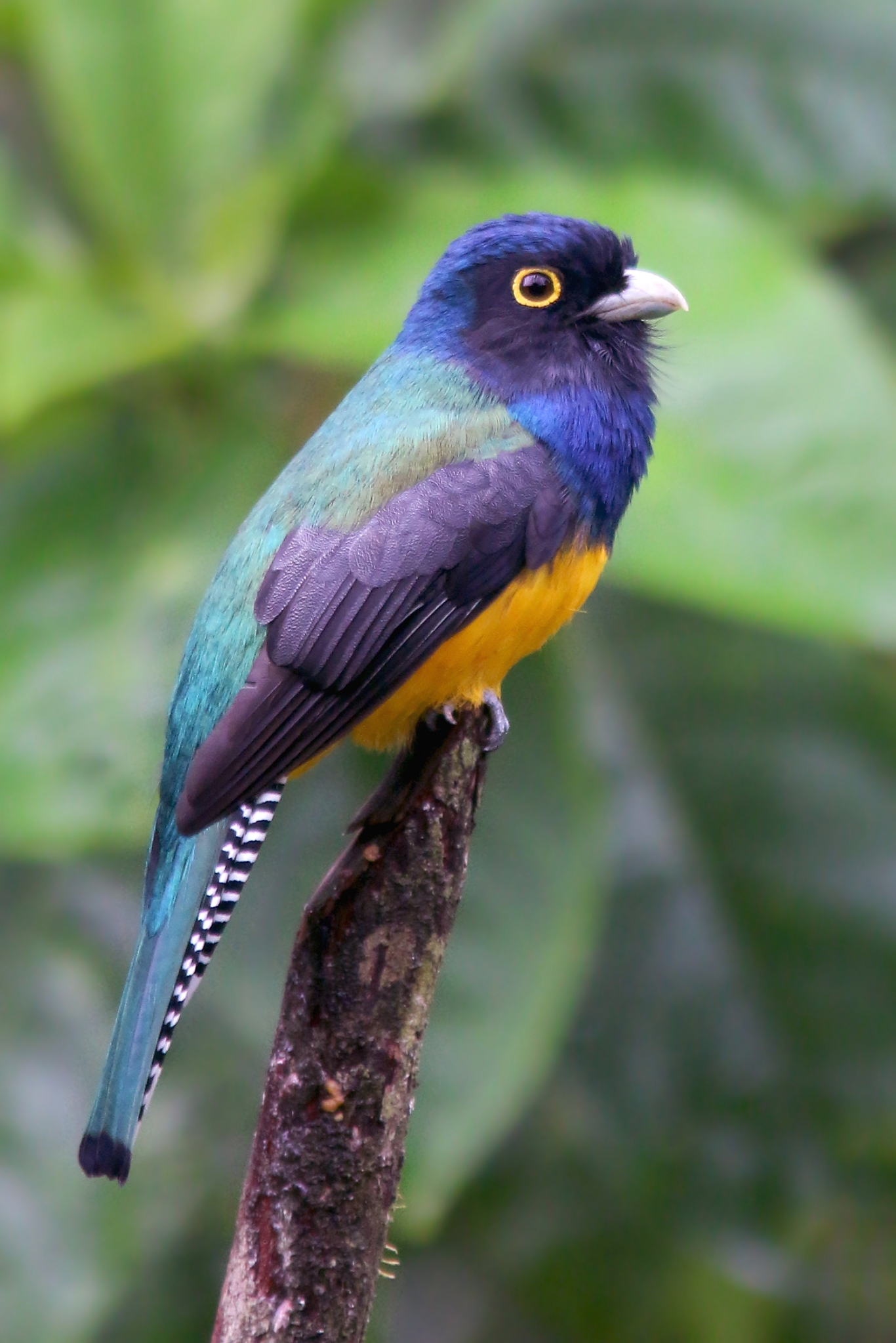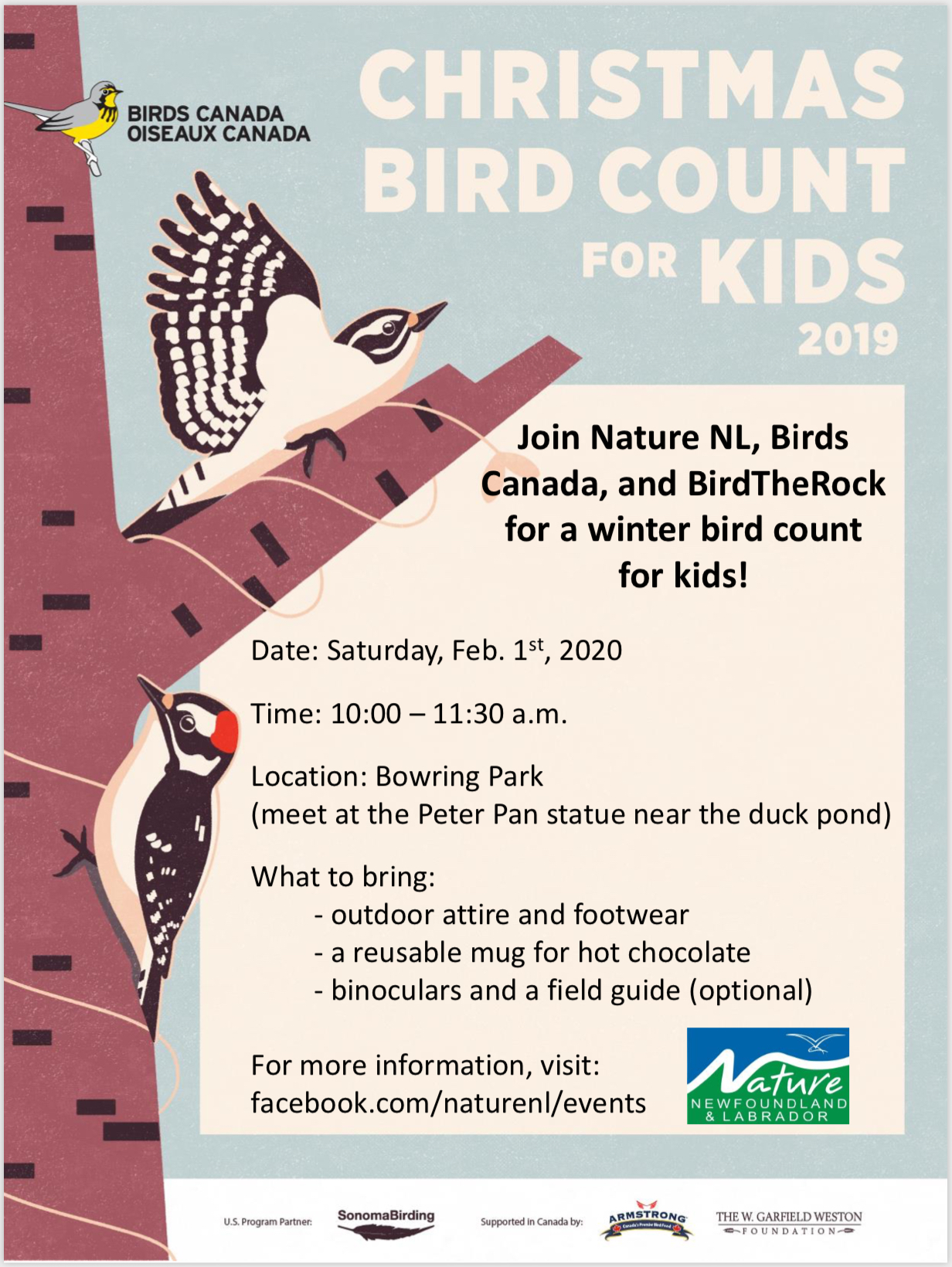"Better late than never" -- Me (far too often)
Wow … Time flies!! It’s hard to believe another year has come and gone … but not without lots of fun & adventure. In fact, 2019 was the busiest yet for BirdTheRock – I was blessed beyond words to share the natural wonders of Newfoundland & Labrador with so many visitors, travel to amazing places both near and far, and experience countless special moments along the way. From snowy mornings on the frozen tundra to hot, sunny afternoons in the ruins of an ancient, tropical city; snowy owls and caribou to hummingbirds and howler monkeys … what a ride!
Below are 19 photos from 2019; chosen to represent just a fraction of the many, many highlights from my year. The busier I get, the harder it is to keep up on this blog – but be sure to follow me on Facebook, Twitter and/or Instagram for LOTS more photos, regular highlights and often daily updates from ongoing tours! I’ll continue to update this blog when I can 😉

My year of birding began with one of my favourite family events – the Christmas Bird Count for Kids. In partnership with NatureNL, we held it at Bowring Park where great winter weather and some excellent birds made for a wonderful morning. Three groups of kids, parents and volunteers scoured the park for gems that included Tufted Duck, Northern Goshawk, Downy Woodpecker and Double-crested Cormorant. Here, our group is enjoying a colourful flock of Evening Grosbeak (incl. my daughters; Emma at the scope and Leslie behind her).

My winter season began with the annual WINGS “Winter in Newfoundland” tour. A variety of interesting and exciting species were found around St. John’s – including dozens of Tufted Duck, Eurasian Wigeon, Black-headed and Lesser Black-backed Gulls. We also had several close encounters with a Northern Goshawk – a hands-down highlight for everyone! Travelling outside the city, we enjoyed more exciting birds and stunning coastal scenery. Dovekie (like the one above) were present in excellent numbers, including several cooperative birds that lingered just metres away. We braved wintry weather to see Purple Sandpipers, Thick-billed Murre, Great Cormorants, Common Eider and Long-tailed Ducks, along with many other northern seabirds. Pine Grosbeaks showed off their gaudy colours, and a very cooperative Snowy Owl capped off our week. It was a fantastic tour with exciting birds, great people, and a wonderful setting!

For a fun family outing, Susan and I took the girls to see and photograph some Harp & Harbour seals in Conception Bay. It was a cold morning, but we enjoyed some very close encounters with these beautiful animals. A few weeks later we found a locally rare Bearded Seal in St. John’s Harbour — you can see photos and read more about that in a blog post here.

The NatureNL “Winter Gull Workshop” has become a popular tradition, and dozens of budding birders showed up to see and learn about the diversity of gulls that visit Quidi Vidi lake during the colder months. It was a beautiful day for sharing the joy of birding, and we enjoyed a rich variety from Glaucous Gull to Gadwall and Tufted Duck to “Saddleback”.

This rare Slaty-backed Gull had been around for a few days and popped in to show off during the Gull Workshop (above). Although I’ve seen, and even discovered, a surprising number over the years, it is always exciting to see one and even moreso to share it with such a fun group of people.

This winter brought with it an opportunity to explore new places, birds and wildlife in Central America. Eagle-Eye Tours offered me a chance to visit Belize & Tikal (Guatemala), where I co-led a fantastic tour with my friend and fellow guide Ernesto Carman. The birds were, of course, amazing — but so were the other critters like this Black Howler Monkey. Listening to their incredible, eerie howls as I hiked the trails or even lay in bed is something I’ll forever remember.

Belize & Guatemala included much more than just birds, of course – the incredible culture and history of the area alone is worth a visit. Wandering around, and birding in, the incredible temples and ancient metropolis of Tikal was transcendent. The largest city of the Mayan Classical period, it was inhabited from ~600BC until its abandonment ~900AD and had a peak population of more than 100,000 people! You can check out a short blog post about the trip, or simply view a selection of my photos in this Flickr album. You can also read about my previous visit to Central America (Honduras) here.

My next Eagle-Eye Tours adventure brought me to more familiar places – the Point Pelee and Algonquin Park tour. Lady Luck was on our side this year, as we hit the migration melting pot of Point Pelee National Park on three amazing days! We experienced a “fallout” of migrating songbirds, had colourful warblers hopping at our feet, watched the unique phenomenon of “reverse migration” over the point, and scored a number of “sought-after” species like Acadian Flycatcher and Canadian rarities like Swallow-tailed Kite. Things may have slowed down a little after such a fast-paced start, but the birding remained excellent through other Ontario hotspots like Rondeau, Long Point, and Algonquin Provicial Park. (Above: a Blackburnian Warbler – one of many, many warblers that showed off for us at Point Pelee. Check out more photos in this Flickr album.)

One of the most sought-after birds during spring migration is Kirtland’s Warbler. This enigmatic little warbler is one of the most range-restricted species in North America, breeding in young Jack Pine forests of Michigan and (just barely) Wisconsin. A few get spotted at migration hotspots like Point Pelee (Ontario) or Magee Marsh (Ohio) each spring, and is always an exciting find. Kirtland’s Warbler was a bird I very much hoped (but not necessarily expected) to encounter during this tour – and I was totally stoked when we met up with this one near one of Point Pelee’s many picnic areas. Making the bird even more special, it is named after Dr. Jared Kirtland – who, of course, shares my first name 😉

The last day of the Point Pelee & Algonquin tour was punctuated by some exciting news from back home … an extremely rare Eurasian Oystercatcher had just been reported!! Just the fifth record for all of North America (and the fourth for Newfoundland), this wily shorebird was found and photographed at Lush’s Bight, on a small island in Notre Dame Bay. It took a few days for me to arrange the time (since I was just arriving home from a long trip and the bird was ~7 hours drive and short ferry ride from St. John’s), but the next week my friend Chris Ryan and I made the two-day trek and scored this mega — perhaps my “most wanted” species for Newfoundland! You can read the full story, and see lots more photos, on the blog post here.

Eurasian Oystercatcher may have been the most exciting new species I saw in Newfoundland this year, but I did add two more that were somewhat more common (at least in other parts of eastern North America — Roseate Tern (a long-time “nemesis”) and this Turkey Vulture (a species which is reported occasionally on the island, but rarely tracked down by eager birders). This individual spent several days hanging out near La Manche Provincial Park (45 minutes south of St. John’s) in late May. I managed to spot another (or maybe the same one) near Renews in January 2020, and it was later reported hanging out in that area. Turkey Vultures are becoming increasingly common in the Maritime provinces, but since they generally avoid flying over open water they rarely make it over to Newfoundland.

Late spring and summer were extremely busy for BirdTheRock Bird & Nature Tours. I was very lucky to spend that time sharing the amazing birds, wildlife and scenery of Newfoundland with dozens of visiting birders – from St. John’s to Gros Morne National Park and Witless Bay to Bonavista. I especially enjoyed having my daughter Emma join me for her very first visit to the incredible Cape St. Mary’s Ecological Reserve. It was a spectacular day, and smiles like that are exactly why I do what I do.

Each and every tour held a special surprise or highlight, but the Northern Gannets aof Cape St. Mary’s are always at the top of the list. One day, my guests and I were treated to an especially close encounter as a lone gannet perched nonchalantly at the tip of the “Bird Rock” viewing area – allowing us to capture some wonderful photos.

Of course, Atlantic Puffins also steal the show on many days – and this summer was no exception. Catching interactions between these cute but goofy birds is always fun, and this turned out to be one of my favourite images of the entire year.

Late summer (August) each year brings another fun Eagle-Eye Tours trip – this one to New Brunswick and the beautiful Bay of Fundy. Highlights of this tour include the spectacular gathering of tens of thousands of Semipalmated Sandpipers and other shorebirds, migrating songbirds, and a visit to lovely Grand Manan island. We had gorgeous weather and light during our pelagic trip this year, and great looks at many seabirds (including hundreds of Great Shearwater like this one).

I was honoured once again this fall to join Adventure Canada on their “Newfoundland Circumnavigation” – exploring my own beautiful province from a very different perspective aboard the Ocean Endeavour. This expedition cruise stops at three (!!) UNESCO World Heritage Sites, several small and isolated outports, and even explores uninhabited coves, bays and fjords along the way. The diverse cultural, historical and of course nature-based experiences make this a world-class trip – and I recommend it to anyone who wants to see Newfoundland in a unique way. This year (2020), I’ll be teaming up with Adventure Canada for a different expedition – this time to Greenland & Wild Labrador! Join me??

December snuck up on me quickly – along with a happy return to Trinidad & Tobago, leading my fourth Eagle-Eye Tours trip to this awesome destination. We had a great time – enjoying the amazing birding at Asa Wright Nature Centre, across the varied habitats of Trinidad, and then to more relaxed but equally bird-filled Tobago. This Guianan Trogon was just one of many many highlights! (You can find many more photos and stories from my earlier trips here and here.)

Throughout all my travels, my constant companions included my trusty Kowa scope & binoculars. I’m proud to be an ambassador for these amazing optics – the sharpest, brightest glass out there; comfortable to use and handle; and above all else, tough! My gear gets used a lot, lugged all over the world, and carried through all kinds of terrain & weather – so it needs to hold up 🙂 Follow the link above to read more about my experiences with Kowa gear.

The winter began, and they year ended, with a surprising number of rare and lingering warblers in eastern Newfoundland. This Hermit Warbler (the 4th record for Newfoundland) was perhaps the biggest surprise, although the unprecedented number of Townsend’s Warblers (12+) may have been the bigger story. We’ll likely never know what caused such an insane influx of western warblers, but we enjoyed it just the same! The Hermit Warbler survived well into January thanks to the hard work and dedication of several birders, but sadly disappeared after another unprecedented event – “Snowmageddon”. But that’s a story for next year 😉
And there you have it — another fantastic year in the books. So far, 2020 has been equally exciting, and I can’t wait to see what the rest of the year will bring. Won’t you follow along, or better yet join me, to find out??






















































































